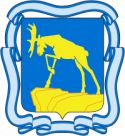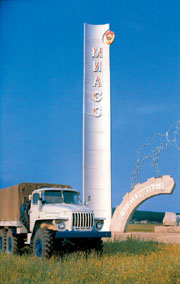| Miass | Settelments of Chelyabinsk region | |


|

Year of foundation – 1773 Territory – 1749 sq. km Nearest railway station – Miass Distance to the region center - 96 km
A vast river valley allows the Miass city to grow in it, as a tree, year by year with new streets and villages springing out. It is interesting to travel to this old Ural city, which went through three "centuries" of development: copper, golden and iron. In 1773 a merchant L.I.Luginin received a permission to build a copper-smelting plant, which gave birth to a Gold in the Miass valley was found in end of the XVIII century, but the "golden age" of Miass came only a quarter of a century later in 1823, when stream-gold was discovered. Only then Miass acquired the reputation of a "Ural Klondike". The Miass valley was the main storehouse of Russian gold for about half of the century. The Miass gold-fields were especially famous for their gold nuggets. Right here in the village near the factory, in 1842 the biggest nugget in the country was found. It was called the "Big Triangle". It weighed about 36 kg 21 g. Old Miass is not big. A number of historical and cultural memorials and examples of architectural styles of the past can be found there. If you pass the plant square you may find yourself in a rich trade center of the Russian provinces of the last century, the distinguishing features of which are self-conceit of the merchants' mansions, abundance of stores, shops and workshops. That is Miass of the "golden age". The modern face of the city is determined by the City's economy The leading branches of industry are machine-building and metal-working, forest, woodworking and pulp and paper industry, medical industry, power industry, industry of building materials. In 2001 industry comprised 78,8%, agriculture – 0,2%, transport and communications – 1,7%, trade and public catering – 0,2% in the structure of production. Growing of vegetables, fruit, berries and potatoes prevails in agriculture. Growing of cattle and poultry and the production of milk and eggs are developed. | |




